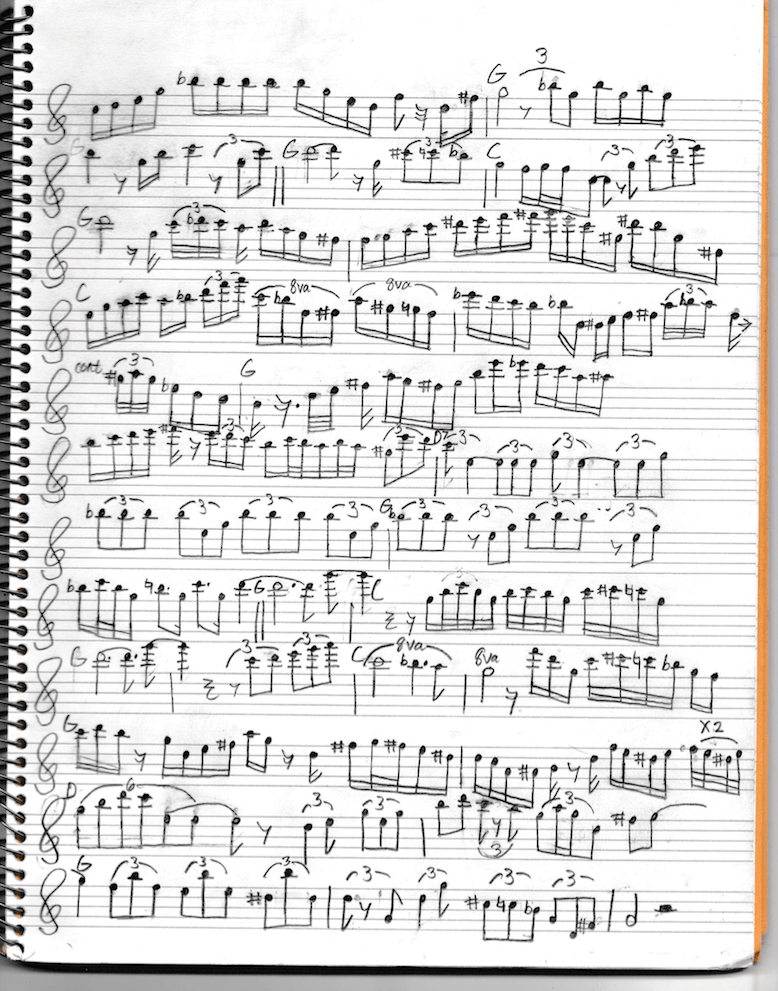
#Baritone saxophone transcriptions upgrade#
After putting together a bulk order for a number of NYC saxophonists I received a newer updated stand, and I am very pleased that Gijs continues to improve and upgrade the design, the newer design is even more ingenious (and lighter!) than the first.
#Baritone saxophone transcriptions serial number#
I have been using the stand nearly every day for 2 years – each stand has a unique serial number and my first stand was #4! The stand has held up beautifully and is in almost like new condition. With Woodwind Design’s new carbon fiber stands I carry a baritone stand in my case every day – while barely adding any extra weight – quite the life changer. The horn of course got battered and dinged, which as a baritone player you almost get to the point where you can live with it. I have had plenty before, big solid steel ones, and even the lighter K+M plastic ones, but without a car it just wasn’t feasible to carry them to gigs, especially if I had a bag, music stand, and bass clarinet! So the horn inevitably got put onto the floor between sets and sometimes quickly put down all too harshly if there was a quick instrument switch mid song. His stands in my opinion are the best option for baritone saxophone available.įor many years I traveled around New York City and the east coast playing gigs and rehearsals without a saxophone stand.

Gijs is a woodwind player himself, but also a tinkerer and inventor. Its being incorporated more and more into many instrument cases – although beware, some case manufacturers offer a carbon fiber “finish” that looks like but is not actual carbon fiber. Carbon fiber is quickly becoming a very popular material, not only for its sleek futuristic look but also because it is incredibly strong yet lighter than many metals of the same weight. We mentioned the stands a couple years back. In the last few years however he has developed new carbon fiber stands that he crafts in his workshop (garage?). As far as I can tell he has been around for a while, mostly making specialty stands for woodwinds, especially clarinets out of interesting materials, often beautiful woods and other materials. Gijs van Leeuwen is from the Netherlands and has created a company called Woodwind Design. But today I would like to review a product that now goes with me to every rehearsal and gig. From a business perspective it makes sense – baritone products are larger, harder to make, need to be able to handle more weight/force and of course are harder to sell since there are less baritonists out there overall. This is true for brands of horn, mouthpieces, cases, and perhaps especially instrument stands. On the last page, where the higher harmonics, I indicated with * notes that can be modified with the embouchure and extra keys.There are never as many options for a baritone saxophonist as there are for the other saxophones. This table also includes correction fingerings for the intonation of some notes. Blue dot : fingerings and corrections without treble F# key.Red dot : fingerings and corrections with treble F# key.No dot: common fingerings and corrections to all saxophones tested.I have indicated the fingerings in colored dots above some fingerings in this chard: I have done the latest tests with the setup (mouthpiece, ligature and reeds) that I currently use. The conclusion is that the C5 key is not essential but it helps a little bite. To make this chart I collected the fingerings of my baritones (from the current to the ones I used before) and I have compared it with a baritone without treble F# one in order to check its repercussion on the production of harmonics. In my career, I have used instruments and mouthpieces by different makes, models and types.


So I have decided to extend the notes of the table with quarter-tones (written here in their current notation) while looking for the most accurate fingerings in terms of intonation and sonority. In the most recent repertoire, the use of the microtones is also becoming more frequent in the altissimo register. I have long wanted to make this table because altissimo range is very often used both in original works and transcriptions.


 0 kommentar(er)
0 kommentar(er)
